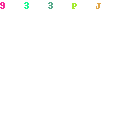
"In 1994 I saw, at an acquaintance's dacha, an unusual hook on which clothes were hanging. It was made from an old toothbrush, without bristles, and had been obviously bent over a fire. There was something strange in that moment of recognition. I immediately saw the light, as it were, and recalled similar things that I knew, belonging to my relatives, friends, acquaintances, or acquaintances of acquaintances. Before then I hadn't really noticed them. Now it seemed to me that it would be an interesting task to gather them all together and see them in large numbers - a gathering of equals. The first on the list of candidates to approach was my father who, I remembered, had several strange 'thingamyjigs'. I started my collection with them. Then I set to work on my cousins, aunts and uncles. Then it was the turn of friends, acquaintances and non-acquaintances. After that things started to seek me out themselves. People who liked the idea called me, and continue to call, in order to inform me when, what, and where they had seen something similar. It's clear that the process of searching for things has its own momentum, its own internal logic, and is of a highly accidental nature."
- Vladimir Archipov Home-Made: Contemporary Russian Folk Artefacts, 2006






